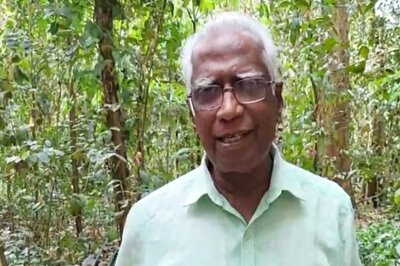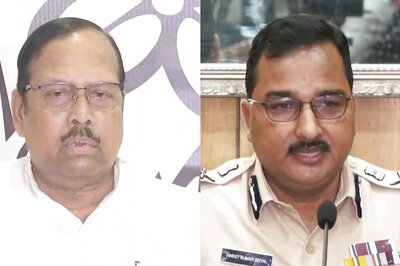
views
My first symptoms were a mild feverish feeling late in the evening on August 16. I had felt similar symptoms in early June and tested negative, so I just took a Crocin and thought it would take care of it.
The next morning though, I continued to feel feverish and I measured it — 99 F. That’s when I decided to test myself and my entire household as I have my 89-year-old mother, a cancer survivor, and my 71-year-old husband, a cancer patient, to worry about.
I immediately self-quarantined in a separate room and waited anxiously for the test results. At 5pm, I was told that I tested positive but that everyone else at home, including my staff, tested negative.
Mercifully, the virus spared my mother and husband. I asked for the CT (Cycle Threshold) value to assess my viral load and when I saw it was 23, I felt the load was safe enough to be home-quarantined under tele-supervision.
Dr Murli Mohan from Narayana Health in Bengaluru and Dr Shashank Joshi from Mumbai-based Lilavati Hospital were my key medical supervisors. I was put on a course of Favipiravir, azithromycin and paracetamol. Apart from this, I continued with my daily dose of Vitamins C and D, zinc, baby aspirin and Chyawanprash. Not to mention my twice a week 200mg dose of HCQ.
Day 2 and 3 were uneventful. I was measuring my oxygen saturation levels six times a day, which were all between 96%-98% even after a brisk six-minute walk. My temperature was normal but late evening on day 3, I felt fluish and it extended to days 4 and 5. No measurable temperature but frequent bouts of sweating, suggesting that my body was fighting the virus.
I was also tracking my Cytokine levels. My CRP was normal at <0.5 throughout the infected period, which indicated no inflammation. My D-Dimer and Ferritin levels were also within normal range. I also tracked my cytokine levels especially IL-6 which were undetectable.
By Day 6, I started feeling better. My RT-PCR test on Day 10 was still positive but with a CT value of 33, suggesting a very low and non-infectious viral load generally attributed to dead virus shedding. I also tested my blood for antibodies and T-cells on Day 9. IgM was noticeably present, but not IgG. My innate immune response based on Dendritic and NK cells was strong. A robust T-cell activation was observed in my sample with a higher frequency of antigen specific T cells, effector T cells, Memory T cells and cytokine release on stimulation. I basically had developed T Cell immunity, which could potentially protect me for a long duration.
On Day 12, my RT-PCR test was positive with a CT value of 36 heralding the final leg of my Covid-19 saga!
My experience has been mild and uneventful. No loss of smell or taste and no drop in oxygen saturation. I recommend to everyone, with mild fluish symptoms, to test and decide on hospitalisation or home-quarantine based on viral load: CT values lesser than 20 with fever ought not to home isolate. Monitoring oxygen saturation several times a day is psychologically good for your virus fighting morale.
I also recommend that you try and exercise or go for a short walk every day to keep fit. I did not experience any loss of appetite and I suggest a diet of fruit, vegetables, lentils and cereal. Soups and salads were a daily feature for my meals. My constant companions were Netflix and Amazon Prime; avoid TV and social media as negative news are bad for fighting Covid-19! My simple learnings:
1. Don’t panic on testing positive.
2. Make sure you assess your viral load based on CT value.
3. Mild symptoms with moderate viral load qualifies for home isolation.
4. Monitor your oxygen saturation several times a day to ensure it doesn’t drop below 95%
5. Make sure you are supervised by a doctor through a Tele-health program.
6. Do yoga and walk as much as you can.
7. Your body will fight the virus in a week.
8. Doctors should not just treat clinical symptoms but rather the cause of the symptoms. For instance, if SpO2 reduces, just increasing oxygen flow is not the answer. Treating inflammation caused by cytokines is the answer.
9. Lack of early intervention in mitigating the inflammation n cytokine storm can cause post Covid-19 fatigue and respiratory ailments.
10. Finally, please test and present yourself as soon as you feel mild symptoms. Do not be in denial n wait for more severe symptoms. You have reduced your chances of a mild disease by doing so.
Leveraging science to manage the virus is the only reliable way forward.
In June, I was half hoping that I contracted Covid-19 to overcome the paranoia and the suspense that has taken over our lives. I was also expecting the infection to be mild and short-lived. My Covid-19 experience has matched these expectations and I hope it allays the fear of the virus.



















Comments
0 comment